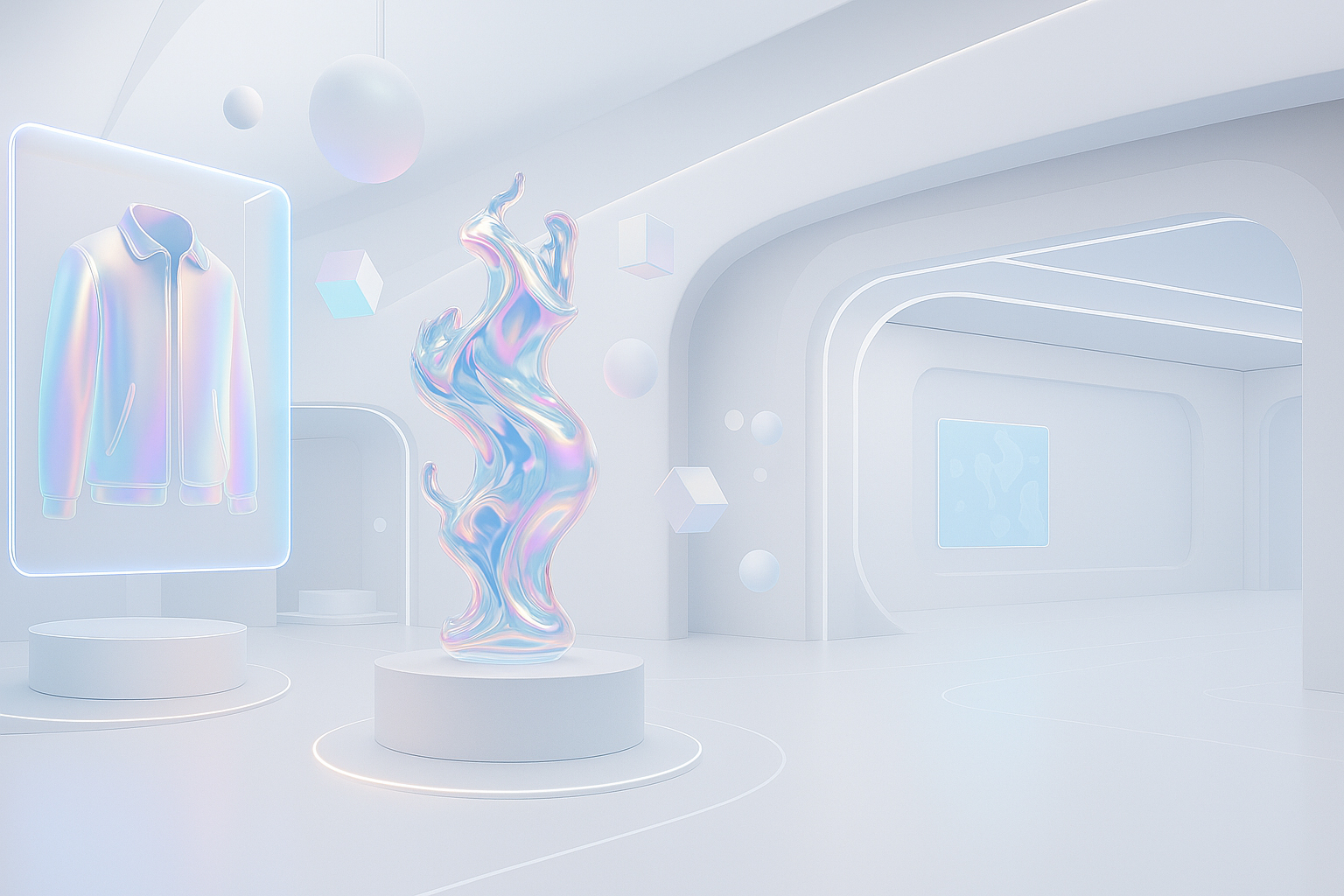Creative Work, 3D Interactions and Human dynamics ___
__by Leio
I’m fascinated by how interactive 3D isn’t just transforming art—it’s reshaping how we relate to each other, to objects, and even to commerce itself. It’s not just about visuals anymore; it’s about presence, connection, and possibility.
PRESENT
_ Creative Work with Interactive 3D
Interactive 3D is where art becomes an experience. It’s no longer a static painting on a wall or a video behind glass. Instead, it’s a living environment you can walk through, touch, or even change. Tools like real-time game engines, volumetric capture, and spatial computing let me build worlds where the audience isn’t passive—they’re co-creators.
This fundamentally alters the creative process. I’m not just thinking about aesthetics; I’m designing narratives, spatial choreography, and systems of interaction. It’s performance art, architecture, storytelling, and software design all colliding in a single practice.
_ Changing Human Dynamics
These immersive spaces are changing how humans connect and communicate. Presence in XR is visceral—you see someone’s gestures, their proximity, their gaze. This sparks genuine emotional resonance, even across continents.
But the shift goes deeper than just presence. In XR, space has meaning again. In flat digital communication, everything happens in the same plane—a video call, a text chat, a scrolling feed. In spatial worlds, the way we position ourselves carries social and emotional nuance. Standing close implies intimacy; stepping back can signal caution. We whisper in virtual corners, form spontaneous circles in social gatherings, and create invisible boundaries of personal space. These subtleties bring back the nonverbal layers of human connection that the web flattened for decades.
Identity, too, becomes fluid and expressive. Avatars are more than digital puppets—they’re a canvas for self-reinvention. People are experimenting with new looks, bodies, and even non-human forms, exploring facets of themselves they might hide in the physical world.
This unlocks both psychological freedom and complex new questions around authenticity, privacy, and mental health. How we see ourselves—and how we wish to be seen—shifts profoundly in virtual realms.
There’s also the emergence of shared memory in virtual spaces. When people gather in a VR world, the experience creates a vivid mental snapshot. You remember not just the conversation, but the digital sun filtering through virtual trees, the art hanging on a polygonal wall, or the echoes in a vast virtual hall. These environments become places in our memory, cementing digital interactions as emotionally significant and deeply human.
Even dynamics of trust are evolving. Seeing another’s movements and hearing spatialized voices builds a sense of “realness” absent in text or video alone. Communities form rapidly in XR—sometimes tighter and more intimate than in real life—because shared spatial experiences foster a kind of emotional bonding accelerated by novelty and creativity.
This all points toward a profound shift in intimacy, community, and social structures. We’re not just consuming content; we’re living inside digital contexts that shape relationships, culture, and even economics. The boundaries between audience and performer, buyer and seller, friend and stranger are dissolving.
_ Shopping Metaverses: The Next Evolution of Commerce
One of the most tangible changes I see coming is how we shop. E-commerce revolutionized how we buy things—but it’s still mostly pictures on a flat webpage. Shopping metaverses are poised to merge digital immersion with real-world commerce.
Imagine:
-
Walking through a virtual boutique, where you can pick up a digital jacket, spin it in your hands, feel its simulated texture, and try it on your avatar.
-
Instantly purchasing the real version, shipped to your door—or choosing to keep the virtual version as an NFT wearable for your avatar in social spaces.
-
Experiencing pop-up art installations inside virtual stores, blending culture and retail into an interactive journey.
-
Shopping experiences personalized by AI, creating unique store layouts based on your interests, past purchases, or even your mood that day.
This goes far beyond online shopping as we know it.
Physical stores might evolve into hybrid spaces that scan your body, generate virtual versions of products, and let you complete purchases in XR.
For artists, this is thrilling. Art becomes part of commerce’s emotional architecture. The aesthetics and narratives we create in virtual spaces will influence how products are discovered, experienced, and remembered.
FUTURE
_ A new layer in reality
It’s still early. There are hurdles—hardware costs, UX challenges, and social norms to figure out. But the momentum is unstoppable. Interactive 3D and metaverse spaces are not a novelty—they’re a new layer of human culture.
-
I believe we’re heading into a world where:
-
_ Art and retail become inseparable.
-
_ Shopping becomes a shared social experience, not a solitary transaction.
-
_ Virtual objects and real products coexist in a seamless continuum.
-
_ Human identity stretches across digital and physical realms, creating entirely new forms of creative expression.
For me as an artist, it’s the ultimate playground. A chance to build worlds that are beautiful, meaningful—and yes, sometimes commercial. Because even commerce can be an art form when it’s driven by creativity and human connection.
The question isn’t whether the shopping metaverse will replace online shopping. It’s how quickly it will blend with reality—and how artists like us will help shape what that future feels like.
-

